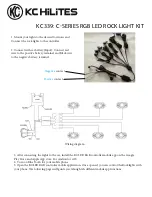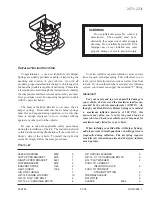
BREAKING-IN
You need to break in new tires for approximately 300 miles
(480 kilometers). During this time, your vehicle may exhibit some unique
driving characteristics. Avoid driving too fast during the first 1000 miles
(1600 kilometers). Vary your speed frequently and change up through
the gears early. Do not labor the engine. Do not tow during the first
1000 miles (1600 kilometers).
ECONOMICAL DRIVING
Fuel economy is affected by several things, such as how you drive, the
conditions you drive under and how you maintain your vehicle.
There are some things to keep in mind that may improve your fuel
economy:
•
Accelerate and slow down in a smooth, moderate fashion.
•
Drive at steady speeds without stopping.
•
Anticipate stops; slowing down may eliminate the need to stop.
•
Combine errands and minimize stop-and-go driving.
•
Close the windows for high-speed driving.
•
Drive at reasonable speeds (traveling at 55 mph [88 km/h] uses 15%
less fuel than traveling at 65 mph [105 km/h]).
•
Keep the tires properly inflated and use only the recommended size.
•
Use the recommended engine oil.
•
Perform all regularly scheduled maintenance.
There are also some things you may not want to do because they may
reduce your fuel economy:
•
Sudden or hard accelerations.
•
Rev the engine before turning it off.
•
Idle for periods longer than one minute.
•
Warm up your vehicle on cold mornings.
•
Use the air conditioner or front defroster.
•
Use the speed control in hilly terrain.
•
Rest your foot on the brake pedal while driving.
•
Drive a heavily loaded vehicle or tow a trailer.
•
Carry unnecessary weight (approximately 1 mpg [0.4 km/L] is lost for
every 400 pounds [180 kilograms] of weight carried).
256
Driving Hints
2013 Edge
(edg)
Owners Guide gf, 4th Printing, November 2012
USA
(fus)
















































